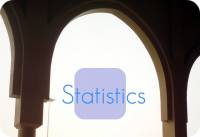
17 Oct Why Do We Make Statistics Harder Than They Need To Be?
MedicalResearch.com Interview with:
 Patrick Weber
Patrick Weber
Doctorate Student / Research Assistant
University of Regensburg
Regensburg, Germany
MedicalResearch.com: What is the background for this study? What are the main findings?
- More than 20 years ago, Gigerenzer and Hoffrage (1995) were able to show the advantages of so-called natural frequencies (e.g., 8 out 10 women) compared to probabilities expressed with percentages (e.g. 80% of the women) when it comes to solving Bayesian reasoning problems. Only last year, a meta-analysis (McDowell & Jacobs, 2017) revealed that while only 4% of all people are able to solve such a task in probability format, tasks that are presented in natural frequencies have solution rates of 24%. Even though this improvement is remarkable, still more than three quarters of participants fail with the intuitive natural frequencies. We wanted to know what exactly these people did wrong.In a first step, we checked the questionnaires from previous studies (e.g. Binder, Krauss, & Bruckmaier, 2015) and found out that many participants had translated given frequencies into probabilities. In a second step, we wanted to examine this systematically.
- With our study, we were able to show that many people actually do not actively make use of the intuitive natural frequencies when presented with a task in frequency format. Instead, they rely on the more complex probabilities, with which they are more familiar from their mathematics education. As a consequence, the majority of these people who translate the intuitive frequencies into more complex probabilities cannot solve the task any more.
MedicalResearch.com: What should readers take away from your report?
- We encourage all readers to actively make use of the intuitive natural frequency format. Try to imagine a concrete sample of people and refer all statistical information to this concrete sample. Especially in medical contexts, for example, when a doctor needs to interpret a positive test result, natural frequencies can be a powerful tool to understand the situation. In particular, they can help to understand the difference between a test’s sensitivity (i.e. the probability that a person gets a positive test result, given this person has the disease) and the inverse probability that a person actually has the disease, given this person gets a positive test result, which is the probability that a patient is actually interested in.
- Furthermore, we would like educators to consider natural frequencies as an equally mathematically legitimate format as probabilities.
MedicalResearch.com: What recommendations do you have for future research as a result of this work?
- Future research might have closer look at where the preference of probabilities over natural frequencies exactly stems from. Here, systematic teacher interviews could reveal whether the frequency format is seen as a valid and helpful tool by teachers. Also, it would be interesting to determine if training studies can prevent people from falling back into the probability format.
MedicalResearch.com: Is there anything else you would like to add?
- We hope that our results will also encourage curriculum designers in medical education to incorporate natural frequencies into statistics lectures for medical students, since medicine is one of the biggest fields of application for Bayesian reasoning tasks. Perhaps the most famous example in this field is the mammography problem, for which doctors need to interpret a positive test result (i.e. calculate the probability that a woman has breast cancer, given she gets a positive mammography) based on statistical information about the mammography screening (the prevalence of breast cancer in a particular age group as well as the sensitivity and specificity of the mammography screening).
Citation:
Patrick Weber, Karin Binder, Stefan Krauss. Why Can Only 24% Solve Bayesian Reasoning Problems in Natural Frequencies: Frequency Phobia in Spite of Probability Blindness. Frontiers in Psychology, 2018; 9 DOI: 10.3389/fpsyg.2018.01833
[wysija_form id=”3″]
[last-modified]
The information on MedicalResearch.com is provided for educational purposes only, and is in no way intended to diagnose, cure, or treat any medical or other condition. Always seek the advice of your physician or other qualified health and ask your doctor any questions you may have regarding a medical condition. In addition to all other limitations and disclaimers in this agreement, service provider and its third party providers disclaim any liability or loss in connection with the content provided on this website.
Last Updated on October 17, 2018 by Marie Benz MD FAAD
